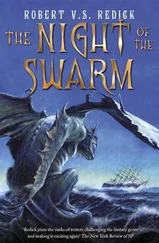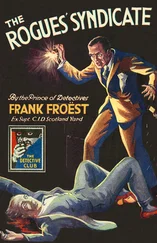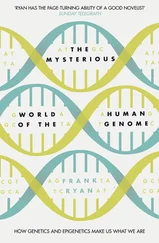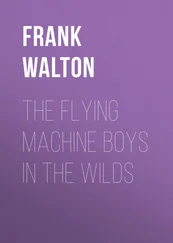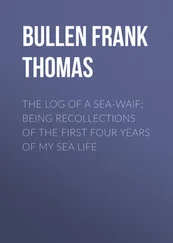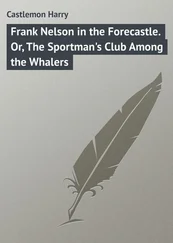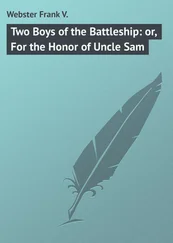Johanson drove slowly. He could have reached Kristiansund within an hour, but he didn't believe in rushing. At Halsa he took the car ferry over the fjord and continued towards Kristiansund, driving over bridge after bridge across slate-grey water. Several little islands made up the town, which he drove through, then crossed to the island of Averoy, one of the first places to have been settled after the last ice age. Sveggesundet, a picturesque fishing village, lay at its furthest tip. In high season it was packed with tourists, and boats streamed out of the harbour, heading for the neighbouring islands. At this time of year, though, there were few visitors, and scarcely a soul was in sight as Johanson's Jeep crunched over the gravel of the Fiskehuset's car park. The restaurant had an outdoor seating area, overlooking the sea. It was closed, but Lund was sitting outside atone of the wooden tables, next to a young man Johanson didn't know. He walked up to them. 'Am I early?'
She looked up, eyes shining, and glanced at the man next to her. He was in his late twenties, with light brown hair, an athletic build and chiselled features.
'Do you want me to come back later?' Johanson asked.
'Kare Sverdrup,' she introduced them, 'this is Sigur Johanson.'
The young man grinned and stretched out his hand. 'Tina's told me about you.'
'Nothing too awful, I hope.'
Sverdrup laughed. 'Actually, yes. She said you were an unusually attractive scientist.'
'Attractive – and ancient,' said Lund.
Johanson sat down opposite them, pulling up the collar of his parka. His briefcase lay beside him on the bench. 'The taxonomic section's arrived. It's very detailed, but I can summarise it for you, if you like.' He looked at Sverdrup. 'I don't want to bore you, Kare. Has Tina told you what this is about?'
'Not really,' he said.
Johanson opened the case and pulled out the envelopes. 'I sent one of your worms to the Senckenberg Museum in Frankfurt and another to the Smithsonian Institute. The best taxonomists I know are attached to them. I also sent one to Kiel to be examined under the scanning electron microscope. I'm still waiting to hear the results on that and the isotope ratio mass spectrometry, but I can tell you now what the experts agree on.'
'Go on then.'
Johanson settled back and crossed one leg over the other. 'That there's nothing to agree on. In essence, they've confirmed what I suspected – that we're almost certainly dealing with the species Hesiocaeca methanicola , also known as the ice worm.'
'The methane-eater.'
'Wrong, but never mind. Anyway, that's the first point. The second is that we're baffled by its highly developed jaws and teeth, which usually indicate that the worm is a predator or that it gets its food by burrowing or grinding. Ice worms don't need teeth like that, so their jaws are significantly smaller. They live symbiotically, grazing off the bacteria that live on gas hydrates…'
'Hydrates? asked Sverdrup.
Johanson glanced at Lund. 'You explain it,' she said.
'It's quite simple, really,' said Johanson. 'You've probably heard that the sea is full of methane.'
'So the papers keep telling us.'
'Well, methane is a gas. It's stored in vast quantities beneath the ocean floor and in the continental slopes. Some of it freezes on the surface of the seabed – it combines with water to form ice. It only happens in conditions of high pressure and low temperature, so you have to go pretty deep before you find it. The ice is called methane hydrate. Does that make sense?'
Sverdrup nodded.
'Hordes of bacteria inhabit the oceans, and some live off methane. They take it in and give out hydrogen sulphide. They're microscopically small, but they congregate in such large numbers that they cover the seabed like a vast mat – a "bacterial mat". They're often found in places where there are big deposits of methane hydrate.'
'So far, so good,' said Sverdrup. 'I expect this is where the worm comes in.'
'Precisely. Certain species of worm live off the chemicals expelled by bacteria. In some cases, they swallow the bacteria and carry them around inside them; in others, the bacteria live on their outer casing. Either way, that's how the worms get their food. And it explains why they're attracted to gas hydrates. They make themselves comfortable, help themselves to the bacteria, and relax. They don't have to burrow because they're not eating the ice, just the bacteria on it. The only effect they have on the ice is through their movement, which melts it, leaving a shallow depression, and that's where they stay.'
'I see,' said Sverdrup, slowly. 'So there's no need for them to dig, whereas other worms have to?'
'Some species eat sediment, or substances present in it, and others eat any detritus that sinks to the seabed – corpses, particles, remains of any kind. Worms that don't live symbiotically with bacteria have powerful jaws for catching prey or burrowing.'
'So ice worms don't need jaws.'
'Well, they might need them for grinding tiny quantities of hydrate or filtering out bacteria – and, like I said, they've got jaws. But not like the ones on Tina's worms.'
Sverdrup seemed to be getting into the discussion. 'But if Tina's worms live symbiotically with bacteria…'
'We need to figure out why they have such killer teeth and jaws.' Johanson nodded. 'And that's where it gets interesting. The taxonomists have found a second worm with that jaw structure. It's called Nereis and it's a predator found in ocean depths all over the world. Tina's worms have Nereis's teeth and jaws but in other respects they resemble its prehistoric forebears – a kind of Tyran-nereis rex !
'Sounds ominous.'
'I'd say it sounds like a hybrid. We'll have to wait for the results of the microscopy and the DNA analysis.'
'There's no end of methane hydrate on the continental slope…,' said Lund, playing with her lip '. . . so that would fit.'
'Let's wait and see.' Johanson cleared his throat. 'What do you do, Kare? Are you in oil too?'
Sverdrup shook his head. 'No,' he said. 'I'm a chef.
'He's an amazing cook,' said Lund.
That's probably not the only thing he's good at, thought Johanson ruefully. Sometimes he found Tina Lund hard to resist, but deep down, he knew she would be too demanding. Now she was off-limits.
'How did you two meet?' he asked, not that he cared.
'I took over the Fiskehuset last year,' said Sverdrup. 'Tina was here a few times, but we only ever said hello.' He put his arm round her shoulders. 'Until last week, that is.'
'A real coup de foudre,' said Lund.
'Yes,' said Johanson, looking up at the sky. The helicopter was approaching. 'I can tell.'
HALF AN HOUR LATER they were sitting in the aircraft with a dozen oil workers. The dull grey surface of the choppy sea stretched out beneath them, littered with gas and oil tankers, freighters and ferries as far as the eye could see. Then the platforms came into view. One stormy winter's night in 1969 an American company had found oil in the North Sea, and since then the area had taken on the appearance of an industrial landscape. Factories on stilts extended all the way from Holland to Haltenbank off the coast of Trondheim.
Fierce gusts buffeted the helicopter, and Johanson straightened his headphones. They were all wearing ear-protectors and heavy clothing, and were packed in so tightly that their knees touched. The noise made talk impossible. Lund had closed her eyes.
The helicopter wheeled and proceeded south-west. They were heading for Gullfaks, a group of production platforms belonging to Statoil. Gullfaks C was one of the largest structures in the northern reaches of the North Sea. With 280 workers, it was practically a community in its own right and Johanson shouldn't have been allowed to disembark there. It was years since he'd taken the compulsory safety course for visitors to the platforms. Since then, the regulations had been tightened, but Lund's contacts had cleared the way. In any case, they were only landing in order to board the Thorvaldson , which was anchored off Gullfaks.
Читать дальше


